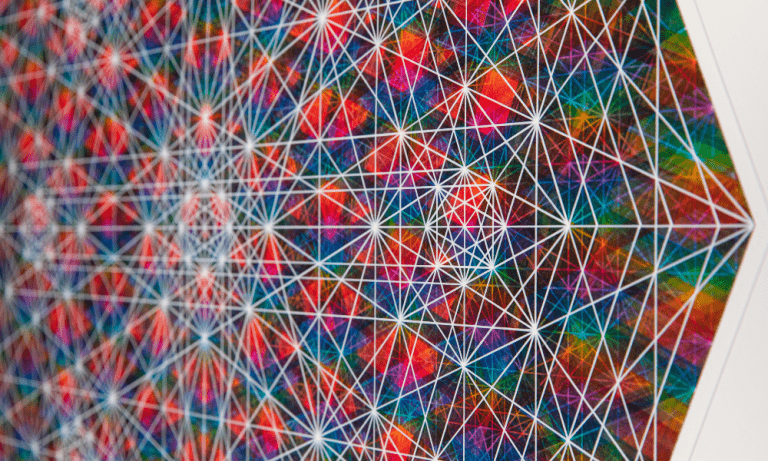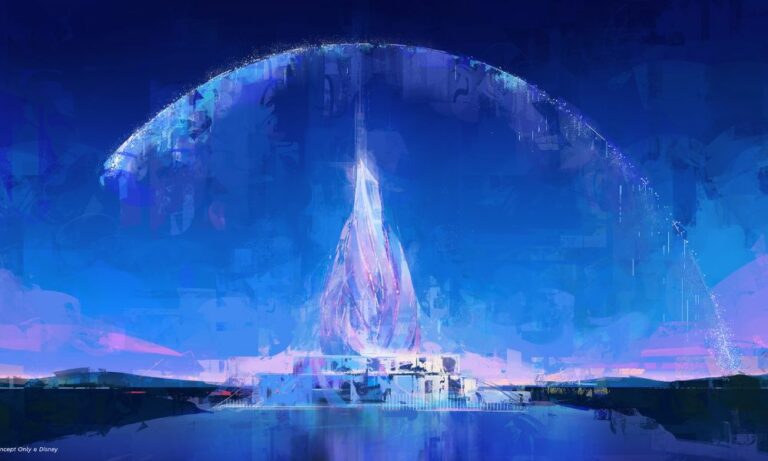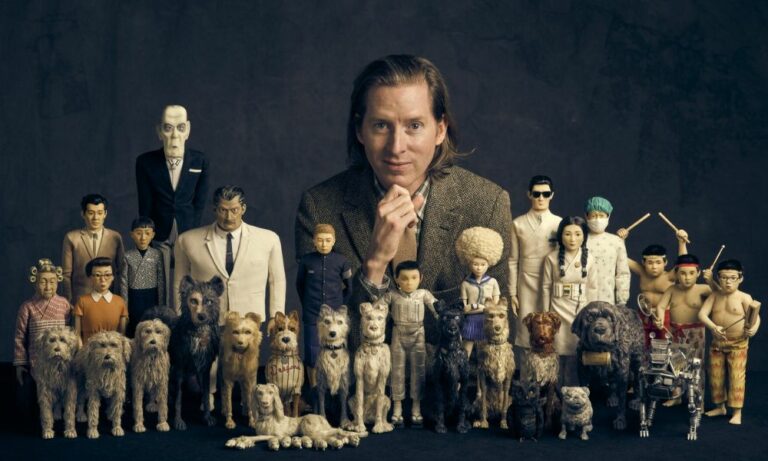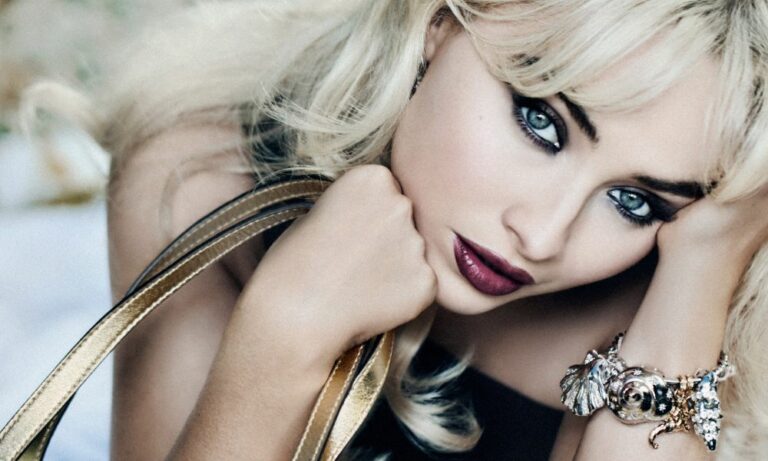Have you ever wondered what it was like to get a glimpse into the creative mind of a naturally gifted artist? Fortunately, I had the chance to do that as soon as I stepped inside Suzi Fadel Nassif’s home in Dubai. Vivid colours, textured walls and a melting candle wax sculpture sitting atop of her living room table were as inviting as her adorable dog wagging its tail at the entrance of her Jumeirah-based home.
Every corner a canvas to unleash her creative potential, Suzi’s home was just a glimpse of her mind — a beautiful mess of colour, inspiration and emotions, and then translated into her artworks.
Blown away with her breathtaking canvas paintings, abstract art and an interesting take on surrealism; she’s developed a keen eye for minute details that have been inspired by different walks of life, cultural diversity and mystery.
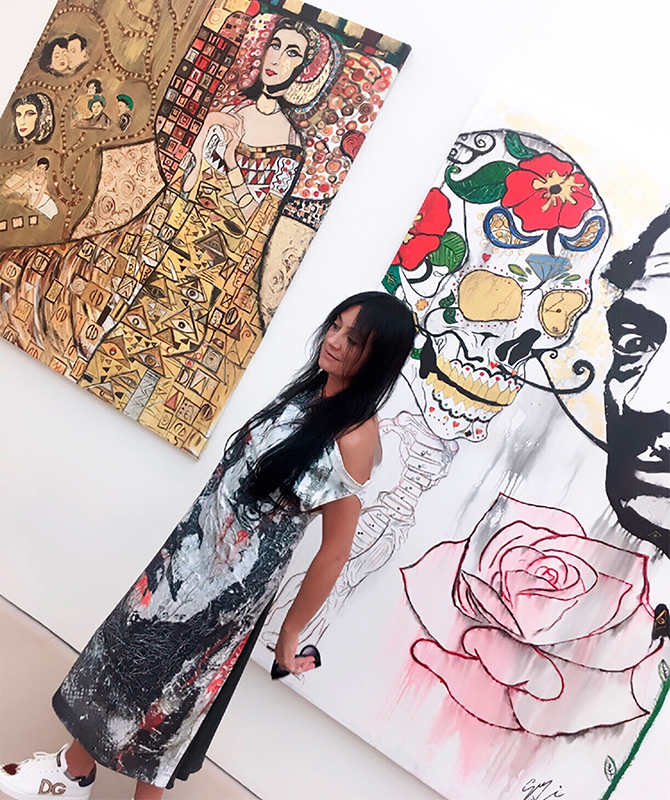
Here, we chat with Suzi just days before her next exhibition at COYA Dubai (details below) to discuss her artistic ambition, her creative process and why she’s worried about where art is heading…
Can you tell us a little bit more of the introduction to art for you?
Since I was a child, I have always had this artistic imagination and I used to scribble a lot. After a while, I started studying music and graphic design, and I even graduated with a marketing and graphic design degree. I worked in an advertising agency as a creative department and I did a lot of things — all under the art umbrella. However, I never studied painting, fine arts, and I never took any classes.
During the 2006 war in Lebanon, I was there. I was stuck there. And I was stuck there for 33 days and the situation was overwhelming and I couldn’t find an outlet for me to express myself because it was fear. A lot of fear and tension. Suddenly, I was like ‘Oh I need to paint’ but, I didn’t know how to paint.
When you first picked up a canvas, what was it that you first painted?
Dali. One of Dali’s paintings — the fertility painting. I don’t know why I wanted to do it. It connected to me and I was always fascinated with Dali. I love Dali and even until now, I paint Dali.
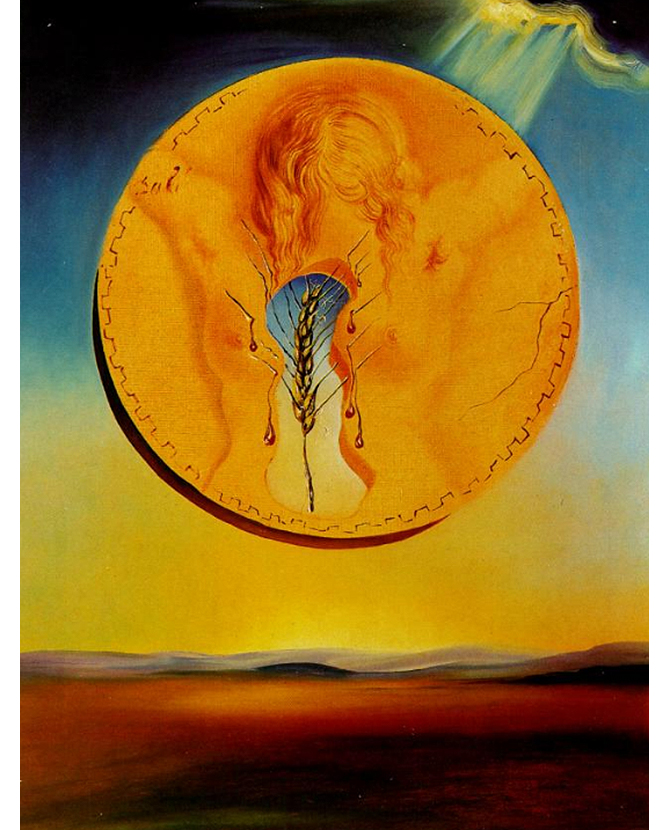
Why was painting your choice of medium?
Actually, I used to do a lot of creative writing but that did not help, at that point. It wasn’t enough for me to express this fear. I bought a canvas and paint tubes, and I started recklessly painting and I didn’t know what I was doing. Then, I felt better.
It was an escape…
Yes, it was like an outlet for me to express myself — with colours, with paint, with everything — it’s different from writing. There’s an action and a revolution (laughs).
The war was then over and we came back to Dubai, and I said ‘Ok, maybe I should pursue this’ and I started teaching myself techniques, I read more about art history, artists, and it was a new world for me — kind of like I recreated a new me. Slowly I started asking people what they thought of my wok and until 2014, I decided to show my art gallery and guests at the gallery were fascinated! The gallery was like ‘we’re going to do a solo exhibition for you’ and so, my first exhibition was a solo exhibition. Usually, it’s not the case.
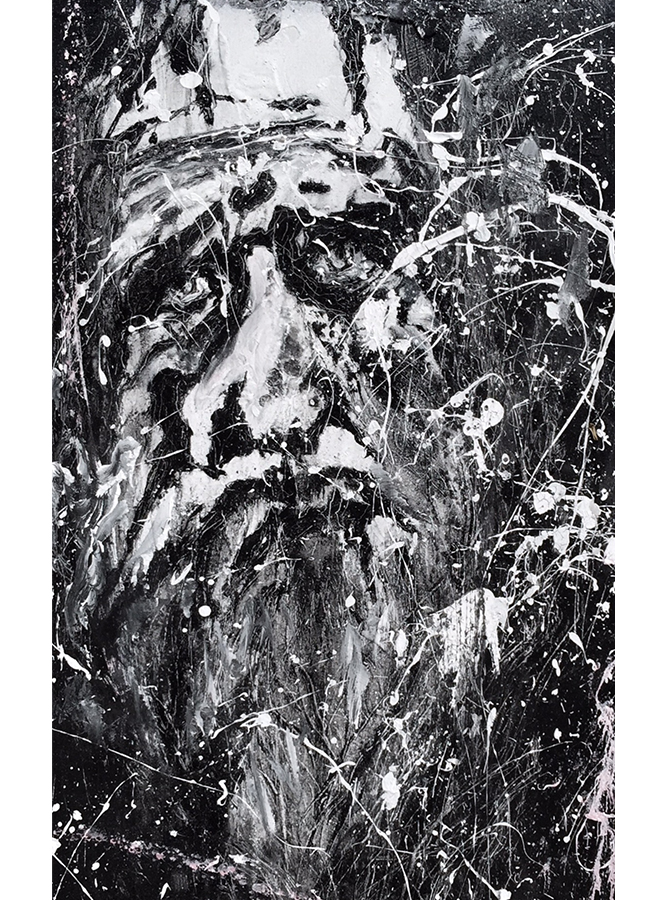
It must’ve been an exciting yet terrifying thing to open up and exhibit your works for the first time…
Yes! To be more exact, in 2014 I lost my father and there was a lot of sadness and grief and crazy emotions happening of course. So, my collection was black and white, and I was expressing a lot of sorrow and anxiety. And a lot of people were touched! Some people would look at the painting and cry. I remember faces and it definitely penetrated them. For me, that means the message was clear.
It must’ve been an amazing feeling to have that connection to somebody, without speaking or knowing one another…
Absolutely!
How did you find your own signature?
In the beginning, I was confused. I did abstract, I did faces, I did landscapes because I could not find my signature until I discovered that I loved to do faces. I love reading expressions and I love looking at faces in general. Now, people will go to an exhibition with 10 artists and they’ll know this is Suzi’s work. It’s a bit messy, it’s a beautiful mess.
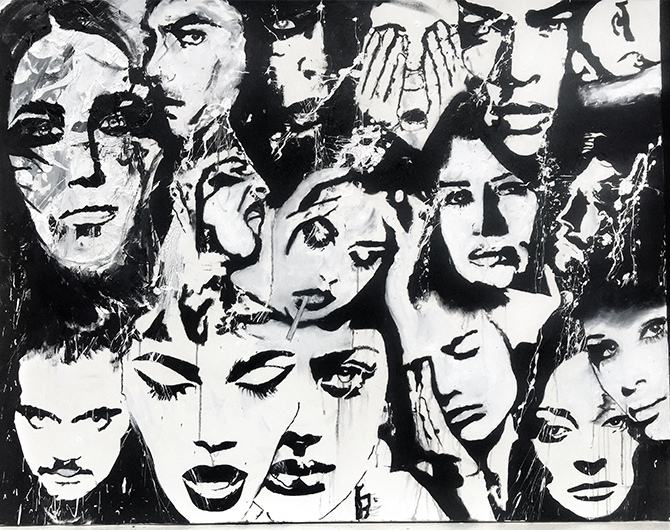
Your pieces speak for itself! What emotions do you want viewers to take in whilst looking at your art?
If it’s a sad painting, they need to feel sad. If it’s a happy painting, they need to be happy. They need to feel it and connect.
Since your solo exhibition in 2014, how do you think you’ve changed and grown?
I became more colourful and more fun. I used to paint just faces with expressions and probably a story, if you look at a painting then you can tell that this person is sad or this person is happy. Now, the paintings are engaging. There are more stories that I’m telling in the paintings and these are the steps I’m taking.
Art is a vehicle for storytelling. In your opinion, what are your thoughts on the industry’s shift to digital art?
I’m going to tell you that in the beginning, in 2008, I had an exhibition where I did digital art and people were not satisfied. They want to touch, smell, feel the art. OK, it was beautiful and everything but I always got the same feedback that we needed to come closer and see the textures. I prefer to do this than to sit on a computer and do digital art. Otherwise, I’d say go for photography (laughs).
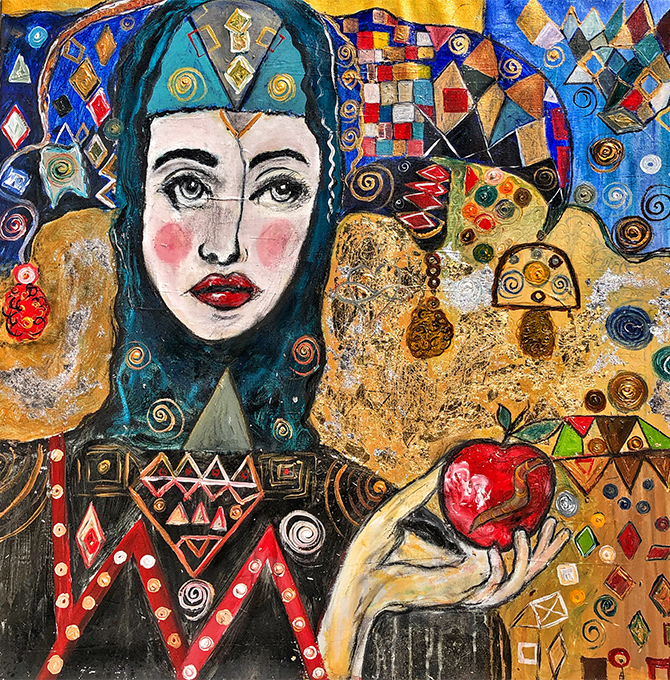
Tell us about your thought process. From inspiration to picking up the paintbrush.
Even just walking on the street, I could get inspired. You’re making stories in your head and it could be anything, and anywhere. For me, it’s like that because I have a very wild imagination. There are many stories happening in my mind and I can paint it. Sometimes, the idea is super clear in my head that I don’t need to sketch and I’ll go straight for the colour. But, 90% I’d rather sketch, see how it looks, and then go to the next step which is the colour. I mean, it all depends.
When are you satisfied and know your pieces are complete?
Most of the time, the paintings are like ‘Stop! Don’t touch me anymore, I’m done.’ Sometimes I listen to the canvas and sometimes I don’t. I decide to add something here and there, but most of the time, people around me are like ‘don’t touch it anymore! You’re going to ruin it.’
Several of your works reference fashion. Why is that?
Fashion and art go hand-in-hand and they’re very well connected. I’ve even started this wearable art project.
Why did you decide to do that?
Basically, I like to see my art moving, not just on the wall. It’s like you’re wearing an artwork. The artwork is with you wherever you go, not just in your house,. Also, a lot of people said I can’t afford to buy your art for example, I heard it a lot, so they can afford this (laughs).
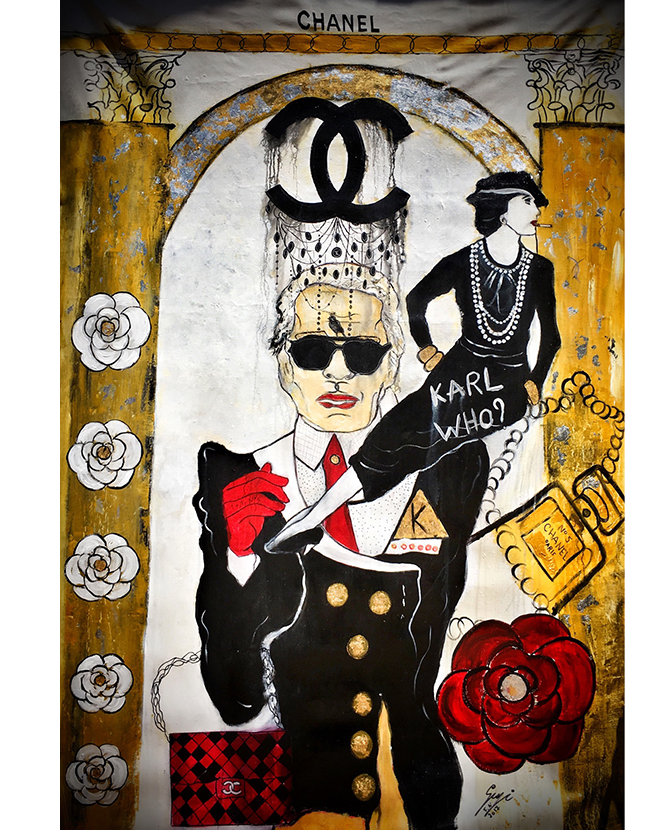
How different do you think the industry has been in the Middle East specifically with art?
The Middle East is very rich in culture we know that, and especially in the art scene now. Lately, there’s been a lot a lot of focus on art and especially in Dubai as well. Sadly though, as an artist right now, there’s a lot of things that I want to express but we have a lot of restrictions, as you know, certain taboos, but hopefully in the future things will change.
What would you tell emerging artists that want to further pursue their careers in art?
Get out there and just do it! I started with nothing and then I worked a lot on myself. There was a lot of rejection, there were a lot of challenges. It wasn’t easy at all but never give up. You need to be up to the game.
If you can go back to an era or time, which artist would you have loved to see live?
Salvador Dali!
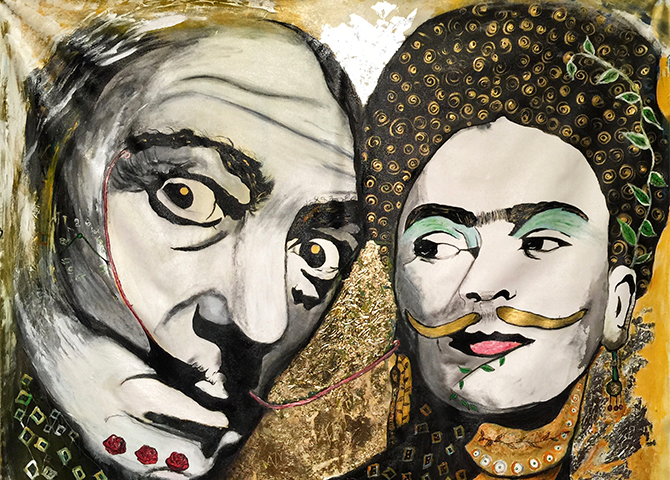
What was your first memory of his works that inspired you?
His world was between real and surreal — a bit like the way I think. His paintings, they talk to you and there’s a lot of connection there, they have a story to tell.
Do you think you would ever collaborate with another artist on one canvas?
No, but I think I’ll do it, one day. I’ve been thinking about that but I need to connect with that artist.
Where do you see art going in the next few years?
To be honest, it’s so hard to say but I’m worried.
Why?
I see a lot of artists with great technique with great story that are not being considered because an art dealer didn’t invest in them, therefore it’s going more on the commercial side.
Next up for Suzi Fadel Nassif, the contemporary artist is set to make her return to COYA Dubai this month, with a new series of artworks titled ‘Teatro del Alma’. Extending beyond the canvas, the collection will also feature a slew of specially-designer kimonos created by the artist for the collaboration.
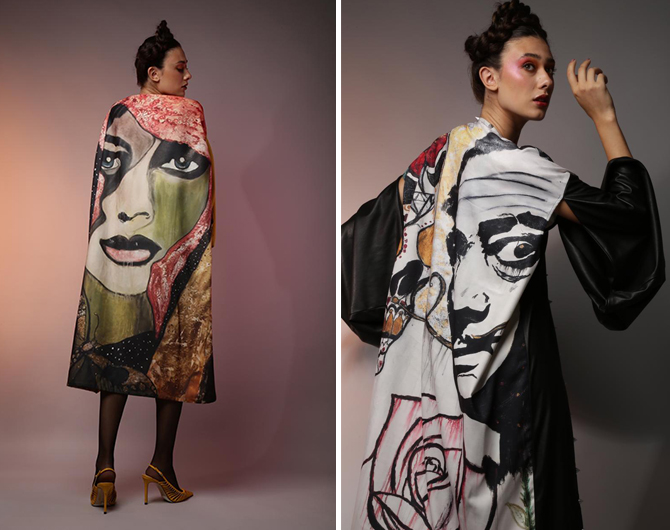
Now, read more about how this Saudi-based artist is modernising the art of Arabic calligraphy.

